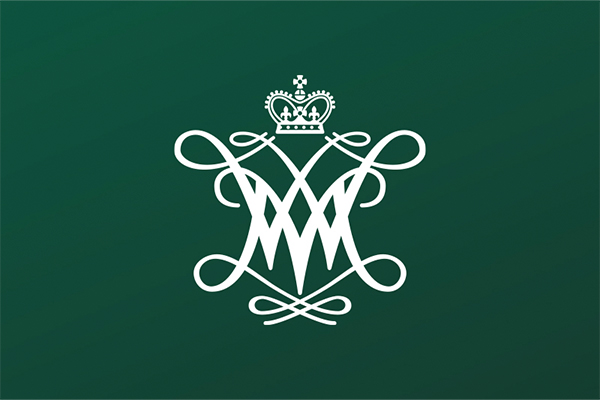
News about the Lemon Project









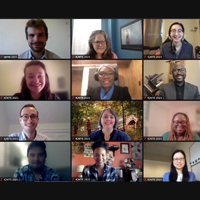
Launched in 2019, the IGNITE program aims to introduce William & Mary to a more diverse pool of faculty prospects while providing them with information, tools and a network with which to start their academic careers.
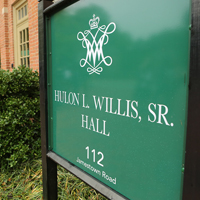
New names in honor of trailblazing alumni now grace two campus buildings. Morton Hall and Taliaferro Hall were dedicated this fall as John E. Boswell Hall and Hulon L. Willis Sr. Hall, respectively.
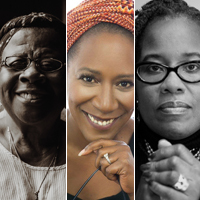
William & Mary’s 11th annual Lemon Project Spring Symposium will feature panel discussions, keynote speeches and performances — all focused on the history and future of Black women in America.
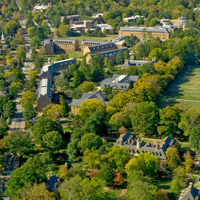
William & Mary’s Working Group on the Principles of Naming and Renaming (PNR) this week presented its final report to President Katherine A. Rowe, who accepted it during the Board of Visitors meeting Thursday in the Alumni House.
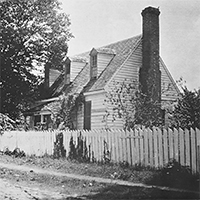
A small white building that sits tucked away on the William & Mary campus once held an 18th-century school dedicated to the religious education of enslaved and free Black children, researchers have determined.
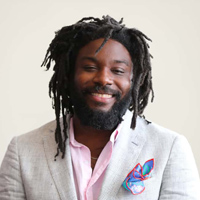
Williamsburg Regional Library and W&M Libraries are once again partnering for One Book One Community, an initiative that encourages readers to come together for a shared reading experience. This year’s book selection is "Stamped: Racism, Antiracism, and You" by Jason Reynolds and Ibram X. Kendi.

The Washington Post article on the final Memorial to the Enslaved design

The William & Mary community responded “emphatically and with a great deal of warmth toward our Alma Mater of a Nation” to principles drafted for naming and renaming of buildings, spaces and structures on campus.

The Board of Visitors heard updates on the opening of the fall 2020 academic year and approved measures to help W&M weather the COVID-19 pandemic.

A finalized design concept for the Memorial to the African Americans Enslaved by William & Mary was presented to the Board of Visitors Tuesday.

The site of one of America’s oldest churches founded entirely by free and enslaved Black people may soon be unearthed. A community-supported excavation aims to find the church’s first permanent structure.
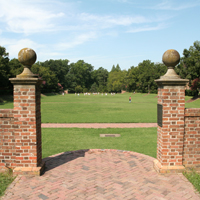
William & Mary’s Principles of Naming and Renaming Working Group is seeking feedback on design imperatives and principles it has drafted around the naming and renaming of buildings, spaces and structures on campus.

"The role of The Lemon Project: A Journey of Reconciliation is to tell the full story, to administer the medicine, and to make it plain for all to see and learn from. Of course, some people will find the medicine difficult to take and it will make them uncomfortable, but that is the price we all must pay if real and lasting change has a hope of surviving."

A. Benjamin Spencer, a nationally renowned civil procedure and federal courts expert and current professor of law at the University of Virginia will begin at William & Mary Law School July 1.
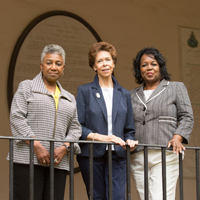
William & Mary’s 10th annual Lemon Project Spring Symposium will center on the theme of “When and Where They Enter: Four Centuries of Black Women in America.”
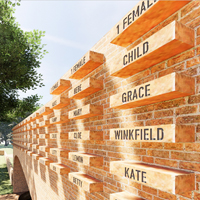
William & Mary is partnering with the York-James City-Williamsburg NAACP, the City of Williamsburg and others to host the area’s inaugural Juneteenth celebration, which commemorates the end of slavery in the United States.

Story from the WY Daily about The Lemon Project.

The Flat Hat's Charles Coleman writes about The Lemon Project's plans for the 2019-2020 school year.

Two episodes of The Global Founders podcast featuring Lemon Project Director Jody Allen

Lemon Project Director Jody Allen discusses the Mellon grant with WTKR News Channel 3.
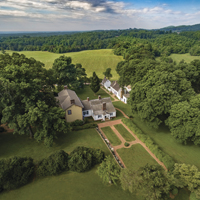
The Andrew W. Mellon Foundation has awarded William & Mary a $1 million grant to support inclusive research, teaching and community engagement around the legacies of slavery and racism.

Washington Post Education article on the Mellon grant

This is a podcast interview with Lemon Project Director Jody Allen and Wood Register, Director of the Sewanee Project on Slavery, Race, and Reconciliation.

Jody Allen, Lemon Project Director, was interviewed by WAVY about the Memorial to African Americans Enslaved by William & Mary.
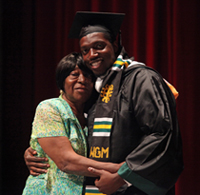
Lemon Project Director Jody Allen discusses the history of the project, its accomplishments and its goals for the future.

A concept has been selected for the Memorial to African Americans Enslaved by William & Mary, President Katherine A. Rowe told the university’s Board of Visitors today.
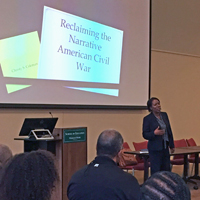
Continuing its powerful work in chronicling William & Mary’s history, the Lemon Project hosted its ninth annual spring symposium, “Celebrating Legacies, Constructing Futures: Four Hundred Years of Black Community and Culture,” on campus March 14-16.
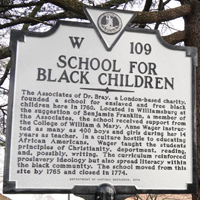
William & Mary officials Friday morning revealed Virginia historical marker W-109 commemorating the spot where the Bray School — an 18th-century school for enslaved and free black children — was once located.
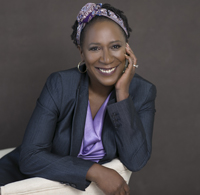
The event, titled “Celebrating Legacies, Constructing Futures: Four Hundred Years of Black Community and Culture,” will include a meeting of the Universities Studying Slavery consortium and a keynote address by Christy Coleman, chief executive officer of the American Civil War Museum, along with multiple panel discussions.

The following events have been planned for Black History Month at William & Mary in 2019.

The Flat Hat article on the Lemon Project's new student volunteer group, The Lemon Project Society.

This is a blog post by Dr. Vineeta Singh, the Omohundro Institute/Lemon Project Postdoctoral Fellow.

The Flat Hat's take on a women focused W&M walking tour that renames prominent buildings for women in W&M's history

The Flat Hat interviews Dr. Jody Allen, the Lemon Project Director, and Dr. Susan Kern, Executive Director, Historic Campus, and Lemon Project Steering Committee Member, about new Civil War exhibition and memorial in the Wren Building.
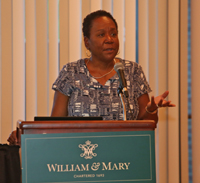
On Sept. 25, as part of the Lemon Project’s Front Porch Talks, nearly 40 members of the William & Mary and Williamsburg communities gathered in the Chesapeake C room of the Sadler Center for an open forum about proposals for a memorial to the enslaved workers of the university.

View the interview with Dr. Jody Allen.

The country’s second oldest university, The College of William & Mary, is turning to the public for ideas for a memorial to honor the slaves who built it.

The College of William & Mary is seeking ideas for a memorial to black Americans who were enslaved by the school or whose work as slaves enriched it.

View the ABC News Now interview with Dr. Jody Allen, the Lemon Project Director.

Today, the university launches a competition soliciting conceptual ideas for a memorial to African-American people enslaved by William & Mary.
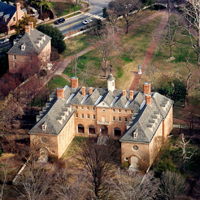
A competition is being launched today to solicit conceptual ideas for a Memorial to African-Americans Enslaved by William & Mary.

Vineeta Singh began a two-year term at the Omohundro Institute on July 1, 2018, as the OI-W&M Lemon Project Postdoctoral Fellow.
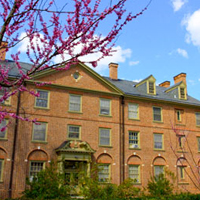
The Bray School was founded by The Associates of Dr. Bray, a London-based charity, in 1760.

Ginger O'Donnell's Insight into Diversity article discusses the W&M Board of Visitors resolution formally apologizing for the school’s historical use of slave labor and past racial discrimination.

The W&M apology coincides with the 50th anniversary of the first three African-American students to reside on campus. And in delving into its links to slavery, the college joins the trailblazing ranks of Brown University, Georgetown University, the University of Virginia and the University of North Carolina-Chapel Hill, among others.
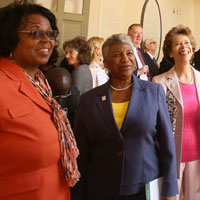
Two plaques, one honoring African-Americans and the other recognizing women, were unveiled and dedicated Thursday afternoon during a ceremony held at what many consider the most important building on campus.

For close to two centuries, the College of William and Mary used slave labor. The College admitted its first African-American residential students in 1967. Today, the Board of Visitors voted unanimously to approve a resolution apologizing for the university’s role in slavery and segregation at their full board meeting.
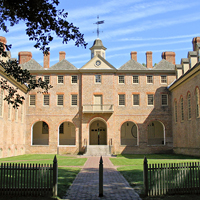
As the long-term Lemon Project effort prepares for the next chapter, a Board of Visitors resolution apologizes for W&M’s history of owning slaves and racial discrimination.
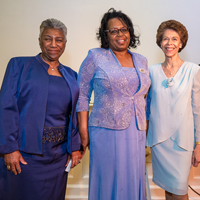
William & Mary has been celebrating the 50th anniversary of its first African-American students in residence throughout the 2017-2018 academic year.
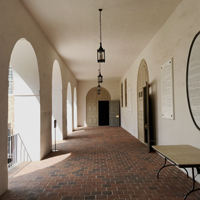
The Wren Building will soon bear two new plaques honoring William & Mary’s first women and African-American residential students.
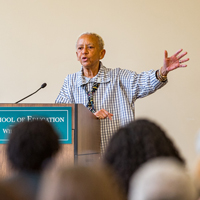
Giovanni, a distinguished university professor at Virginia Tech who has authored more than 27 poetry collections, urged her audience to acknowledge that the first slaves played a crucial, often ignored, part in the formation of America.

Today’s post is courtesy of Ravynn Stringfield, graduate student in American Studies at William & Mary and Lemon Project Graduate Assistant. The Omohundro Institute applauds the work of the Lemon Project and has supported several past events.
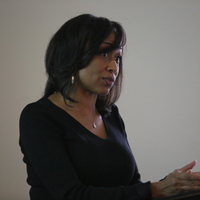
As senior project manager for the National Museum of African American History and Culture, architect Zena Howard educated W&M students on an arduous, but highly rewarding, eight-year assignment.

The Lemon Project was created to research and better understand the history of slavery at the College. Today the Lemon Project also supports students of color and engages with the African-American community in Williamsburg.
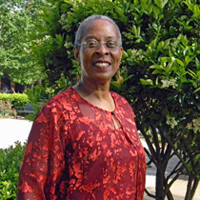
Trudier Harris was recently honored for her groundbreaking role as William & Mary’s first tenured African-American faculty member.
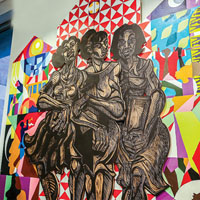
Commemorating 50 years of African-Americans in residence
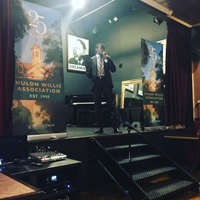
Close to 200 members of the Hulon Willis Association gathered in Washington, D.C., June 23-25 to celebrate its 25th anniversary.

The Omohundro Institute is proud to support the Lemon Project at William & Mary. Lemon Project Fellow Sarah Thomas, Ph.D. candidate in History at William & Mary, brings us this account of the seventh annual Lemon Project symposium.
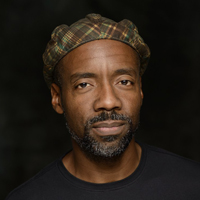
The two-day event, planned for March 17-18, will feature a keynote address by Lester Spence, associate professor of political science and Africana studies at Johns Hopkins University.
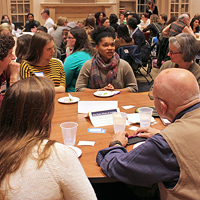
The Daily Work of Justice series aims to explore social justice issues by having people share their lived experiences

The Virginia Gazette reporter Kellen Holtzman writes about Ysaye Barnwell’s Building a Vocal Community: The Power of Song in Community workshop, which is co-sponsored by the Lemon Project.
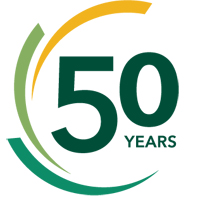
Next fall, William & Mary will begin a yearlong commemoration of the 50th anniversary of the first residential African-American students at the university.
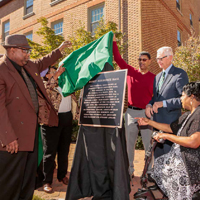
Lemon and Hardy Halls were dedicated on Saturday.

This weekend, the Lemon Project held a consortium for a group of universities studying the history of slavery and the establishment of higher-education institutions. Representatives from other colleges met in Williamsburg from Sept. 30 to Oct. 1 for this event.
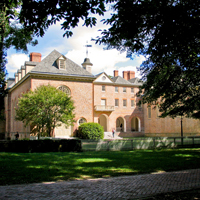
William & Mary’s Lemon Project is exploring ways to memorialize the Africans and African Americans who helped build and maintain the College prior to the U. S. Civil War and is looking for input from the campus and local communities.
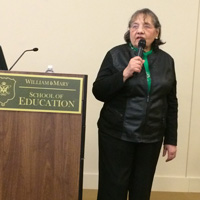
Diane Nash, a major proponent of non-violence during the civil rights movement of the 1960s, outlined how the strategy works during the sixth annual Lemon Project Spring Symposium.
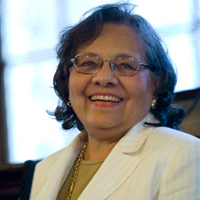
William & Mary's sixth annual Lemon Project Spring Symposium, organized around the theme of "Jim Crow and Civil Rights in the Age of President Obama," will include a keynote address by civil rights pioneer Diane Nash and a performance by the Cleo Parker Robinson Dance Ensemble.
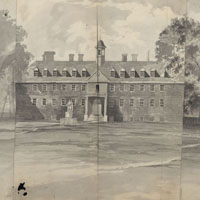
Jody Allen has begun researching the life of John Wallace De Rozaro (also spelled DeRozzaro), a free black man who sought to attend lectures at William & Mary in the early 1800s.
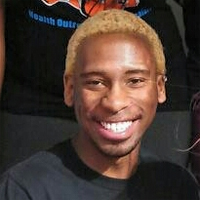
Leslie Walden '15 asked his high school principal, Lynn Briley '71, to participate in Friday's Donning of the Kente ceremony. Briley was one of W&M's first residential African-American students.
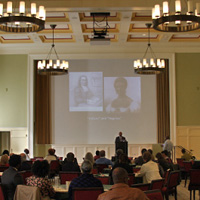
William & Mary's fifth annual Lemon Project Spring Symposium will feature panel discussions, speakers, a solo theatrical performance and a spoken-word event.

W&M faculty members discussed the College's history, from slavery to Jim Crow, during the "Created Equal: Slavery by Another Name" event Nov. 6.

For the past three summers, archaeologists have dug up the grounds of a William & Mary dorm in search of the "smoking lunchbox"—the archaeologists' term for a material-culture connection between the 18th-century Bray School and a building still in use on the William & Mary campus.

More than 100 students participated in the May 9 ceremony, including graduate students who were included for the first time this year.

The two-day event, held Friday and Saturday at William & Mary and Bruton Heights School in Williamsburg, featured a book discussion and keynote presentation by Craig Steven Wilder, the author of "Ebony and Ivy: Race, Slavery, and the Troubled History of America’s Universities."

The William & Mary Lemon Project is preparing to host its fourth annual spring symposium, an event that continues to grow each year.
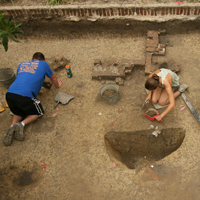
The archaeological field school returned to Brown Hall this summer and found a pit that predates the founding of Williamsburg.
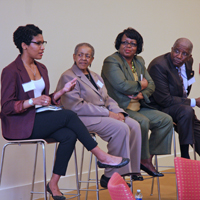
On Friday and Saturday, the Lemon Project hosted its third annual spring symposium, which was dedicated to Bob Engs' memory.

After a summer of excavation, archaeologists feel confident in saying that the 18th century Bray School once stood on the grounds of Brown Hall, a William & Mary dormitory.
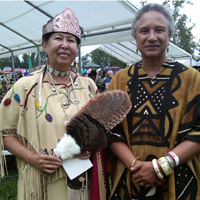
The conference Sept. 21-22 offers a unique one-credit course opportunity for students.

Archaeological work around William & Mary’s Brown Hall is bringing to light artifacts dating back to the early 18th century, including a few items that just might be relics from the Bray School, an 18th century institution dedicated to the education of free and enslaved black children.
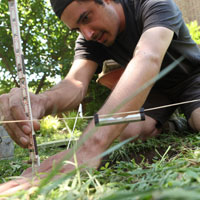
An archaeological collaboration between William & Mary and the Colonial Williamsburg Foundation hopes to find conclusive evidence of the Bray School, an 18th-century institution dedicated to the education of free and enslaved black children.

The College of William & Mary will hold its first "Donning of the Kente" ceremony May 11, with more than 40 students expected to participate.
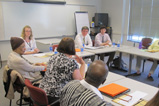
Spring symposium at Bruton Heights School draws 140 from the W&M, Williamsburg communities.

The College of William & Mary's second annual Lemon Project Spring Symposium is slated for March 17 at the Bruton Heights School in Williamsburg, Va.
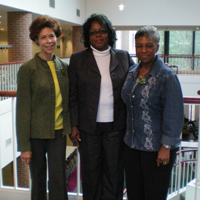
During Homecoming weekend, over 150 William & Mary faculty, staff, students, alumni and their families joined together to honor the College’s first three African-American residential students: Lynn Briley '71, Karen Ely '71, and Janet Brown Strafer '71.

Originally from the Spring 2011 issue of the William & Mary Alumni Magazine.
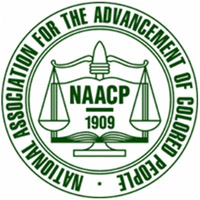
William & Mary's Lemon Project was recently lauded by the College's chapter of the NAACP.
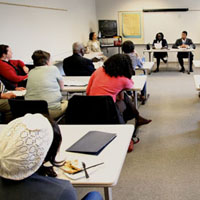
Approximately 100 people gathered at the Bruton Heights School on March 19 to share knowledge, research findings and personal experiences during the Lemon Project’s Spring Symposium.
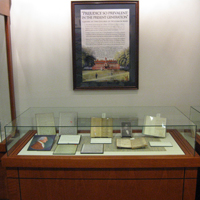
An exhibit exploring the history of slavery at William & Mary is now on display at Swem Library.

The Lemon Project at the College of William and Mary will host its 2011 spring symposium on March 19 at The Bruton Heights School in Williamsburg, Va.
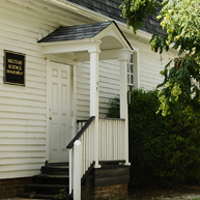
Terry Meyers finds what may be the oldest existing school for blacks, and W&M's role in why it's in Williamsburg.
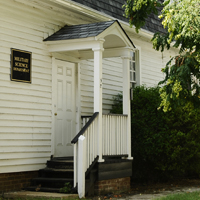
Research by English Professor Terry Meyers regarding the 18th Century Bray School and its possible connection to a College building located on the edge of campus.

William & Mary faculty member Robert Vinson will appear Friday night on WHRO's "Another View" TV talk show to discuss the College's Lemon Project Initiative.
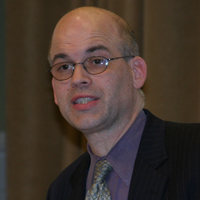
Two William & Mary faculty members will lead the multiyear effort to better understand the role of race in the College's history, including its connections to slavery, Provost Michael R. Halleran announced recently.
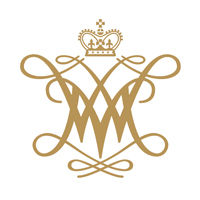
William & Mary will explore its own past involvement with slavery and the complexities of race relations from the end of the Civil War to date.

The following is a resolution that was passed by William & Mary's Board of Visitors in April 2009 concerning the "Lemon Project."
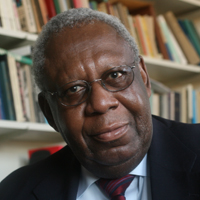
After his freshman year at Princeton University, Robert Engs spent the summer working at Colonial Williamsburg, where the mission is "That the future may learn from the past."














